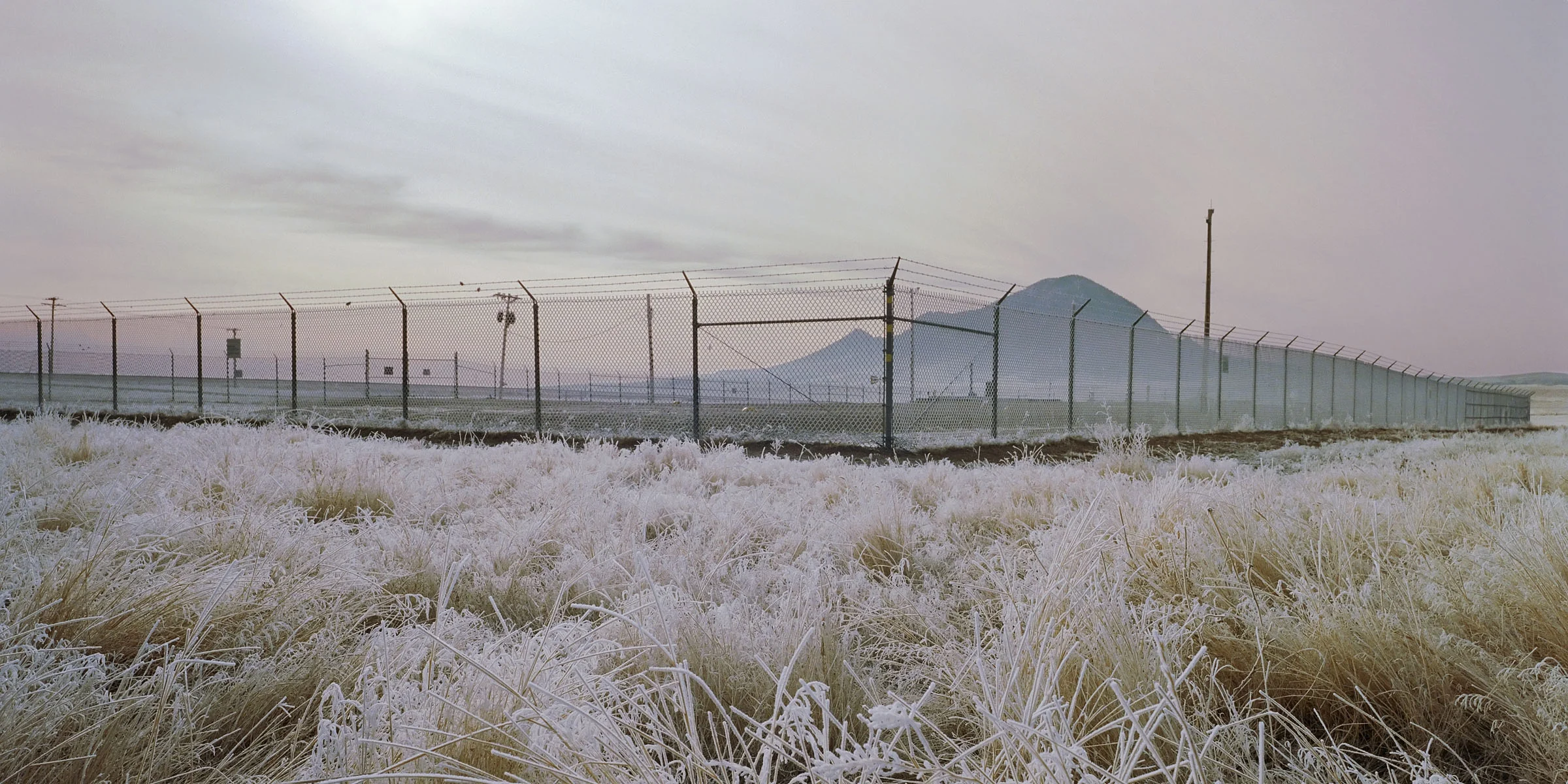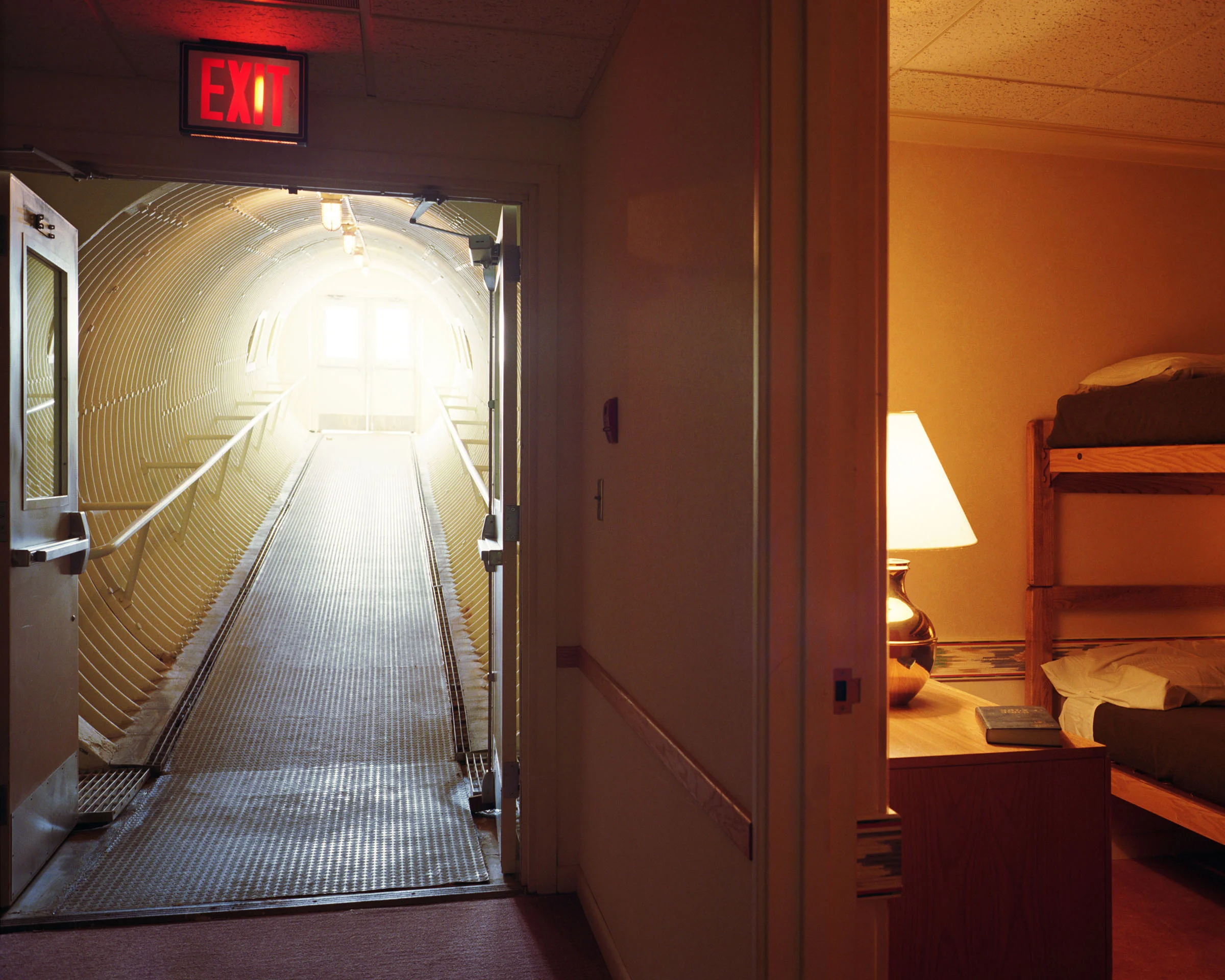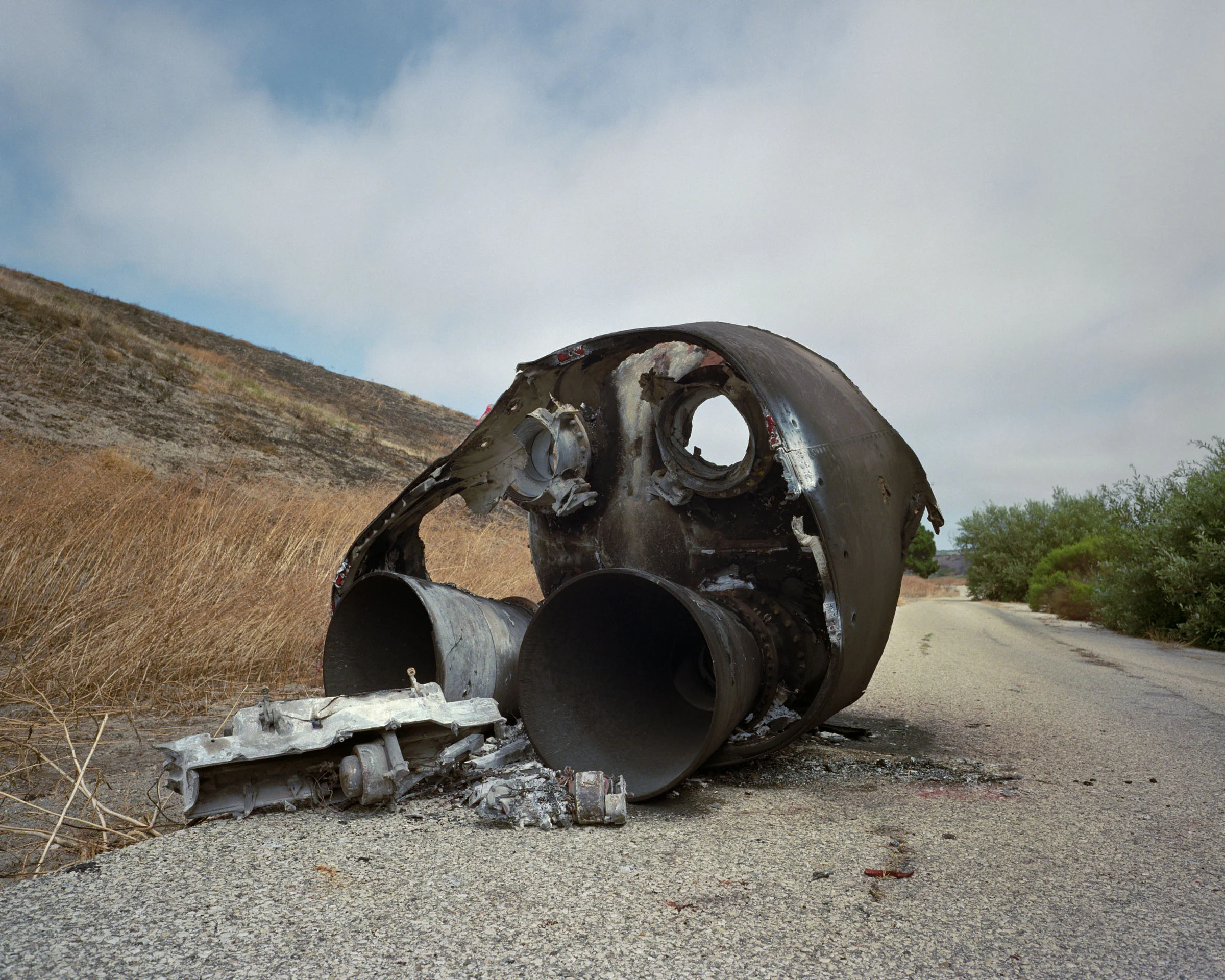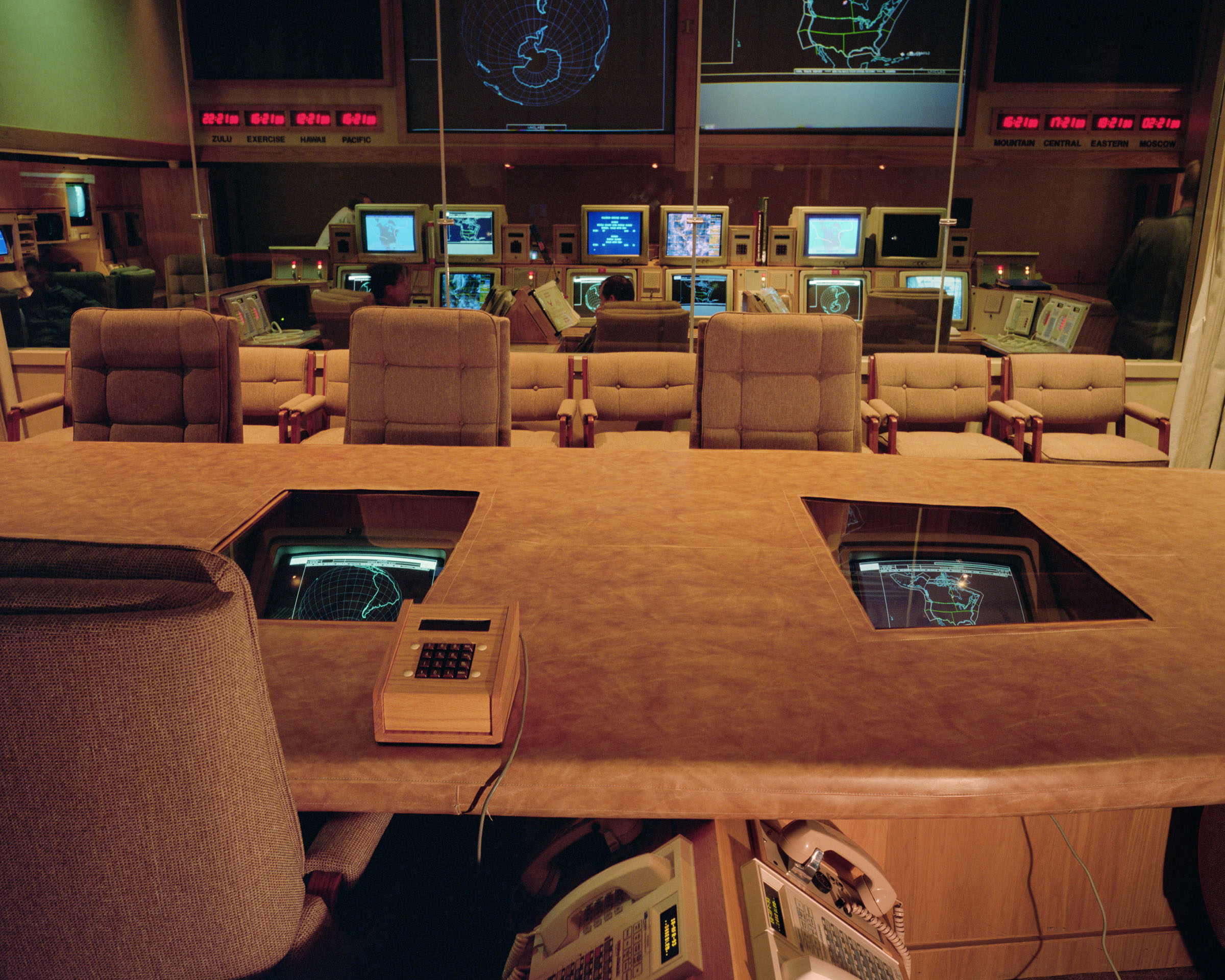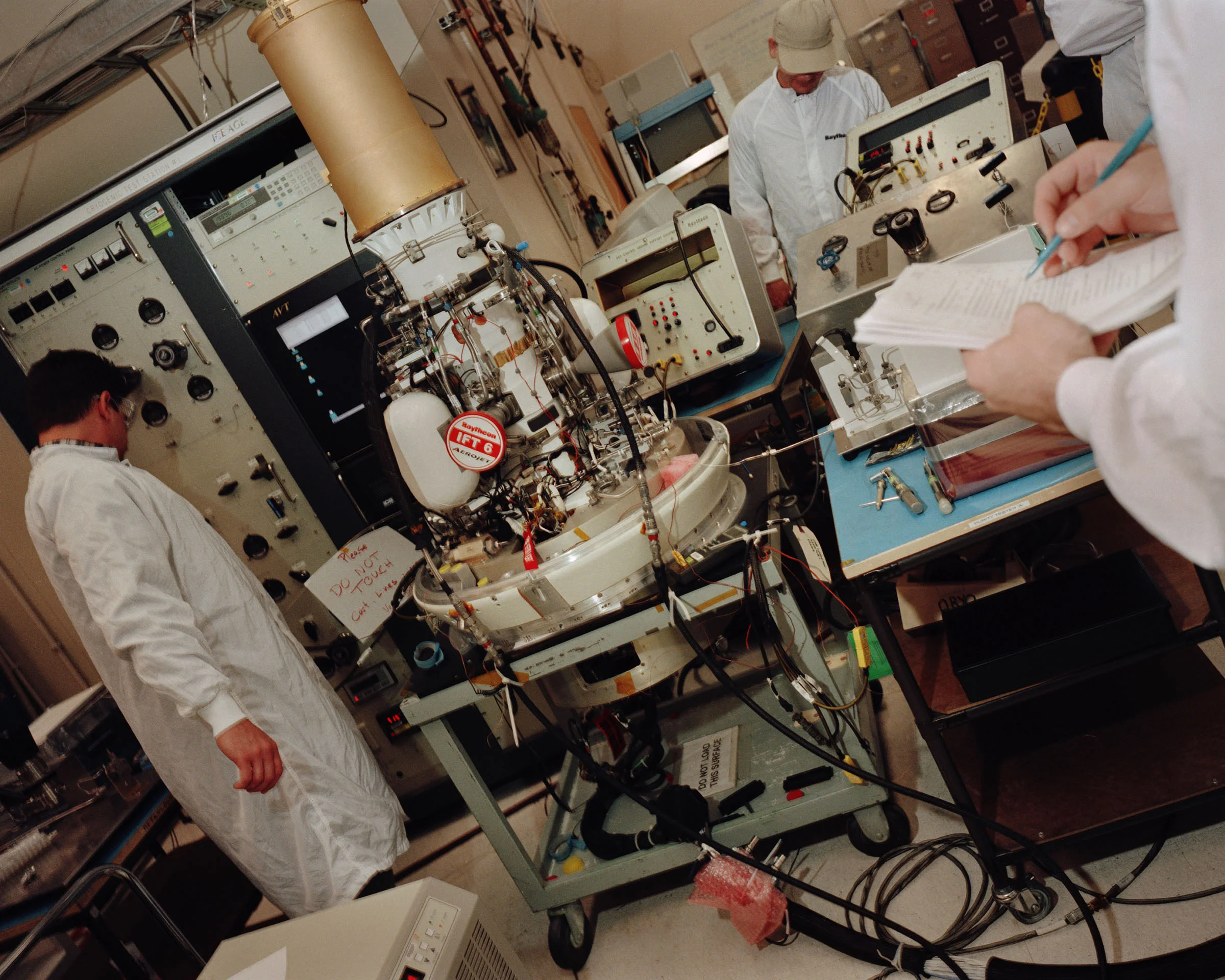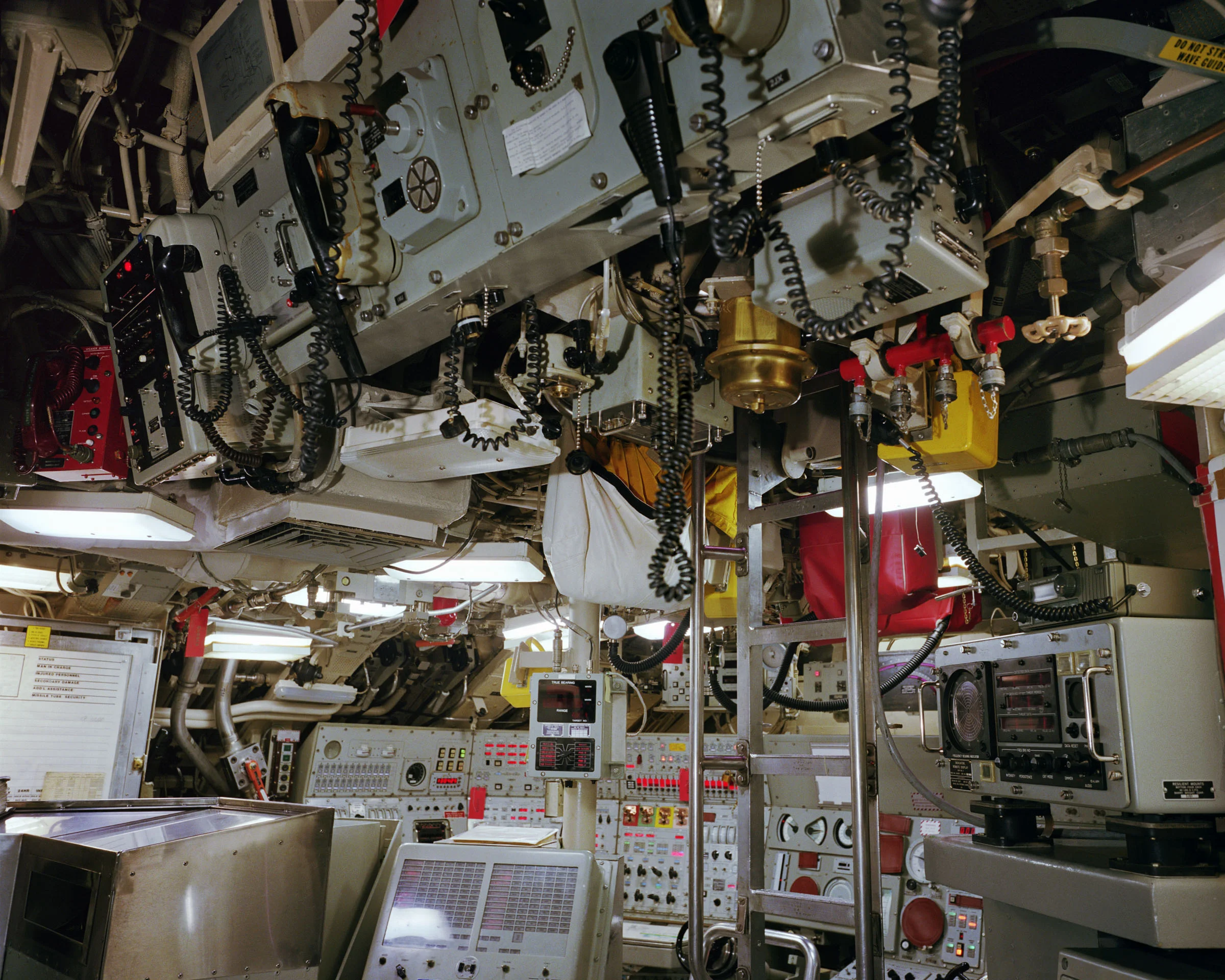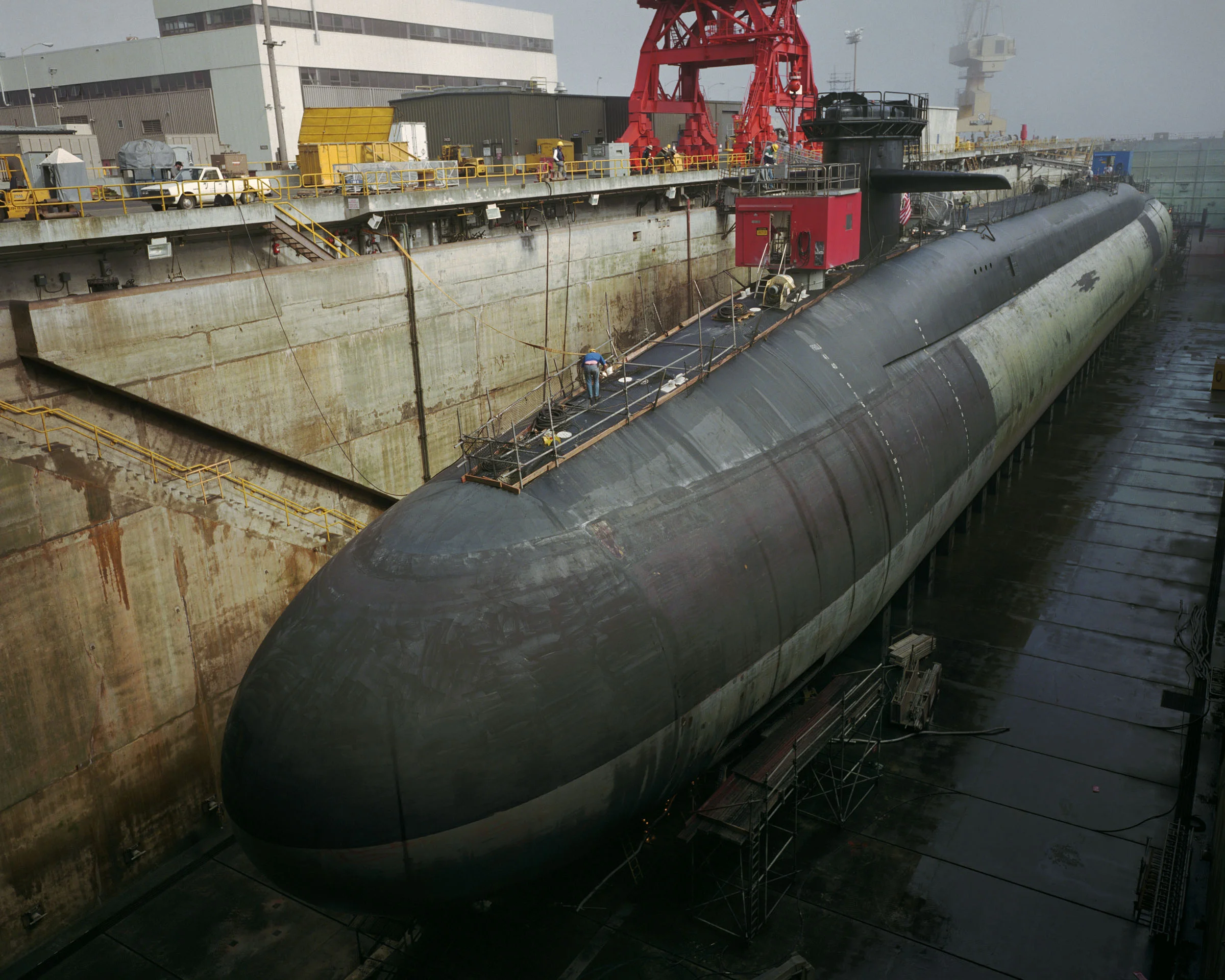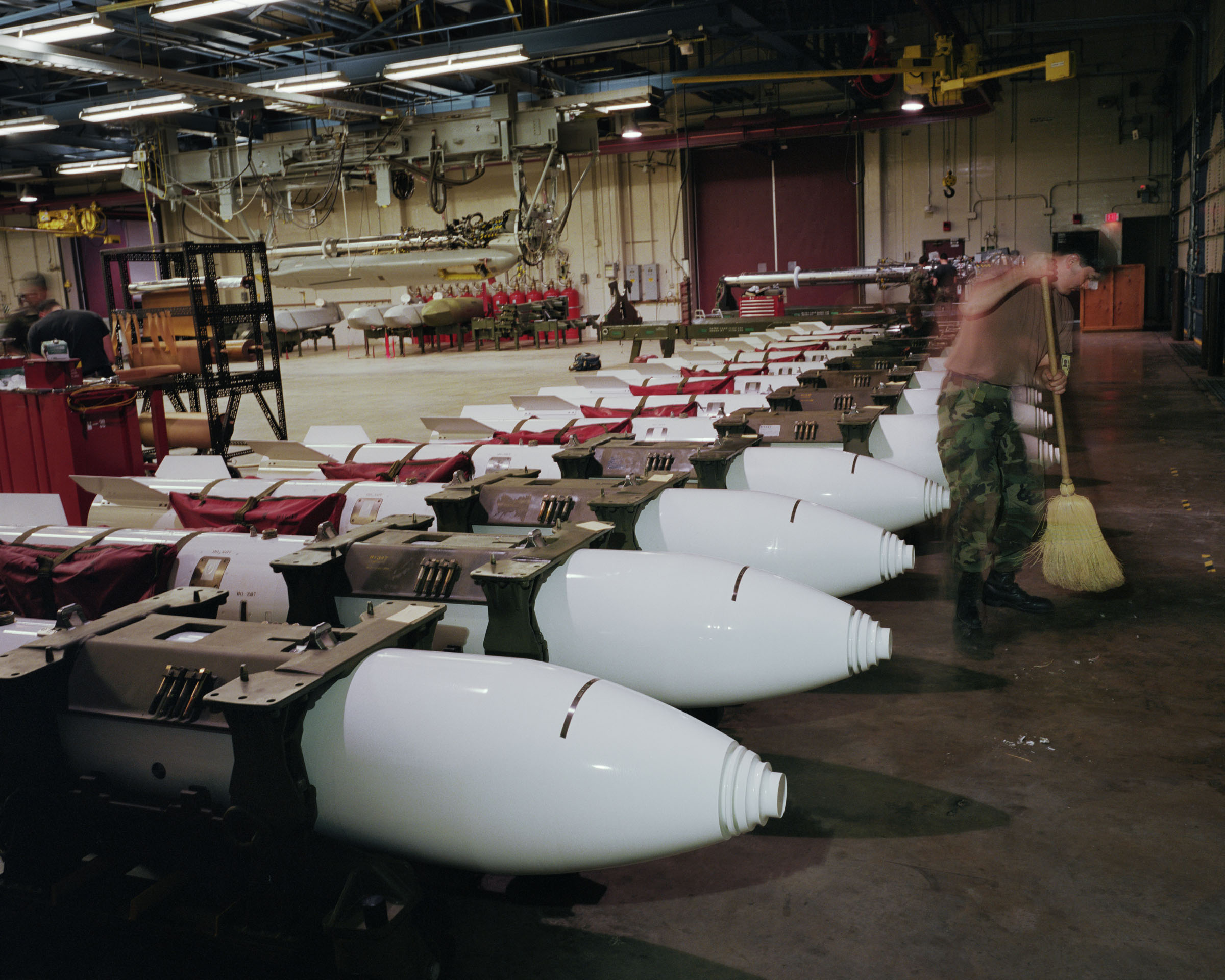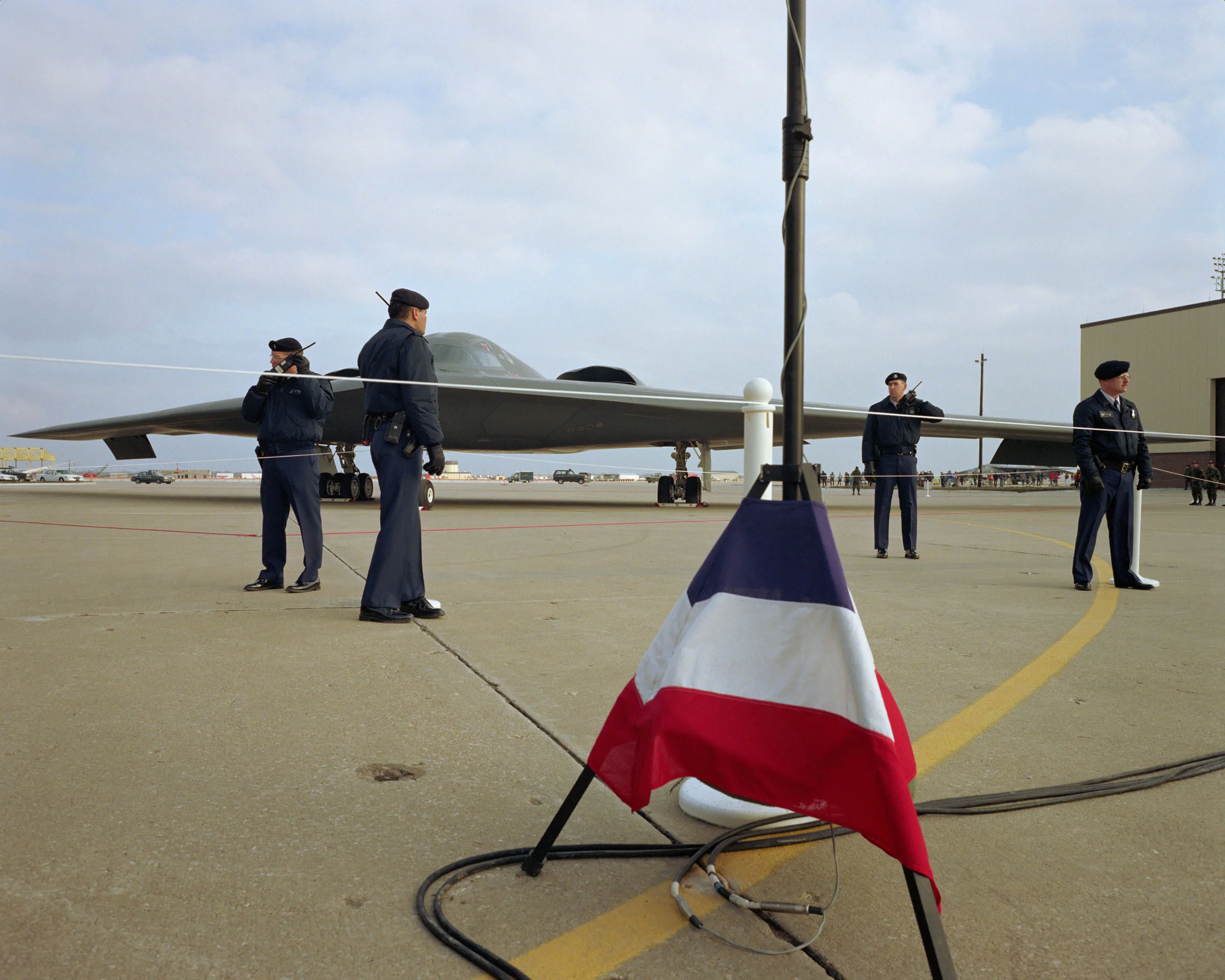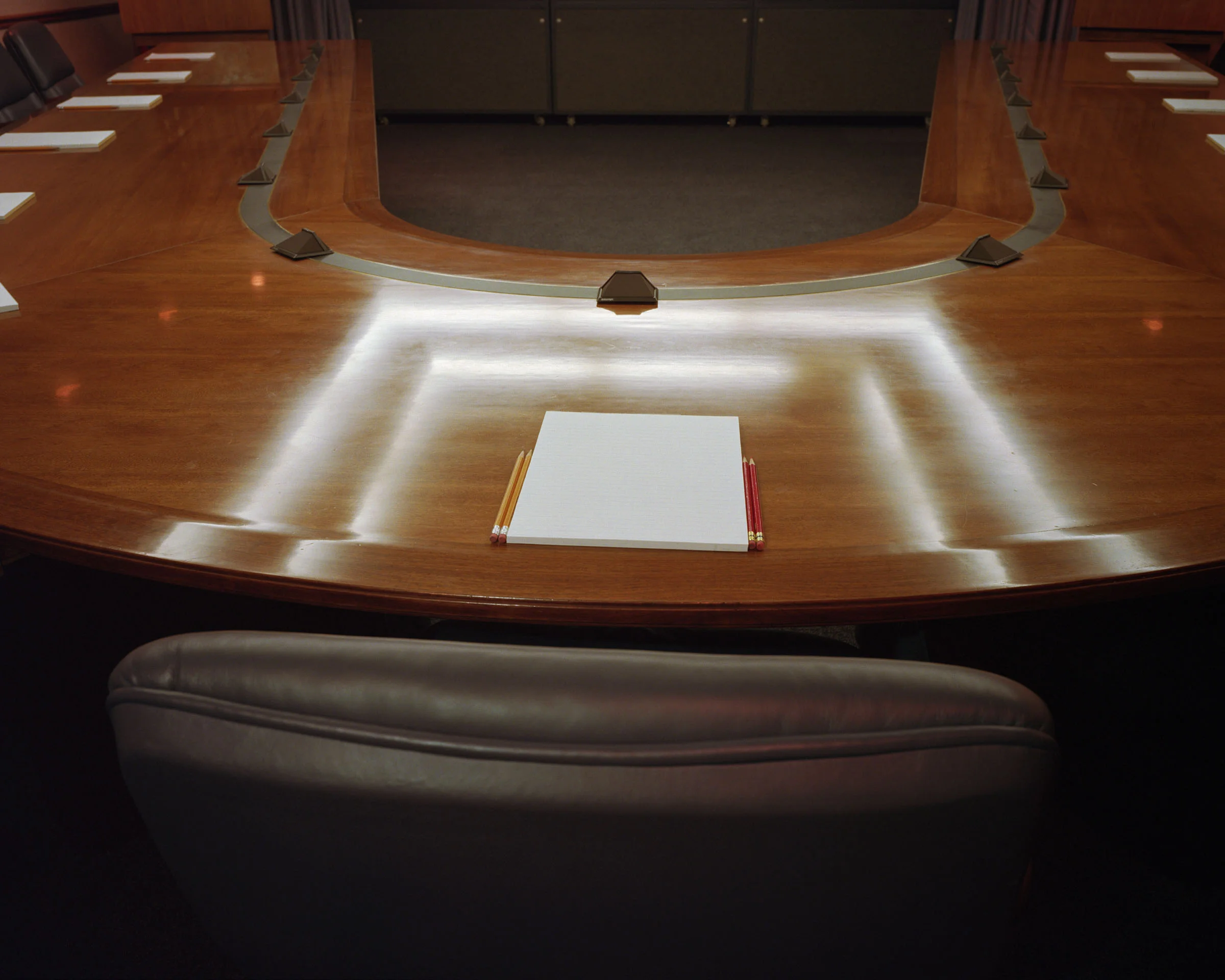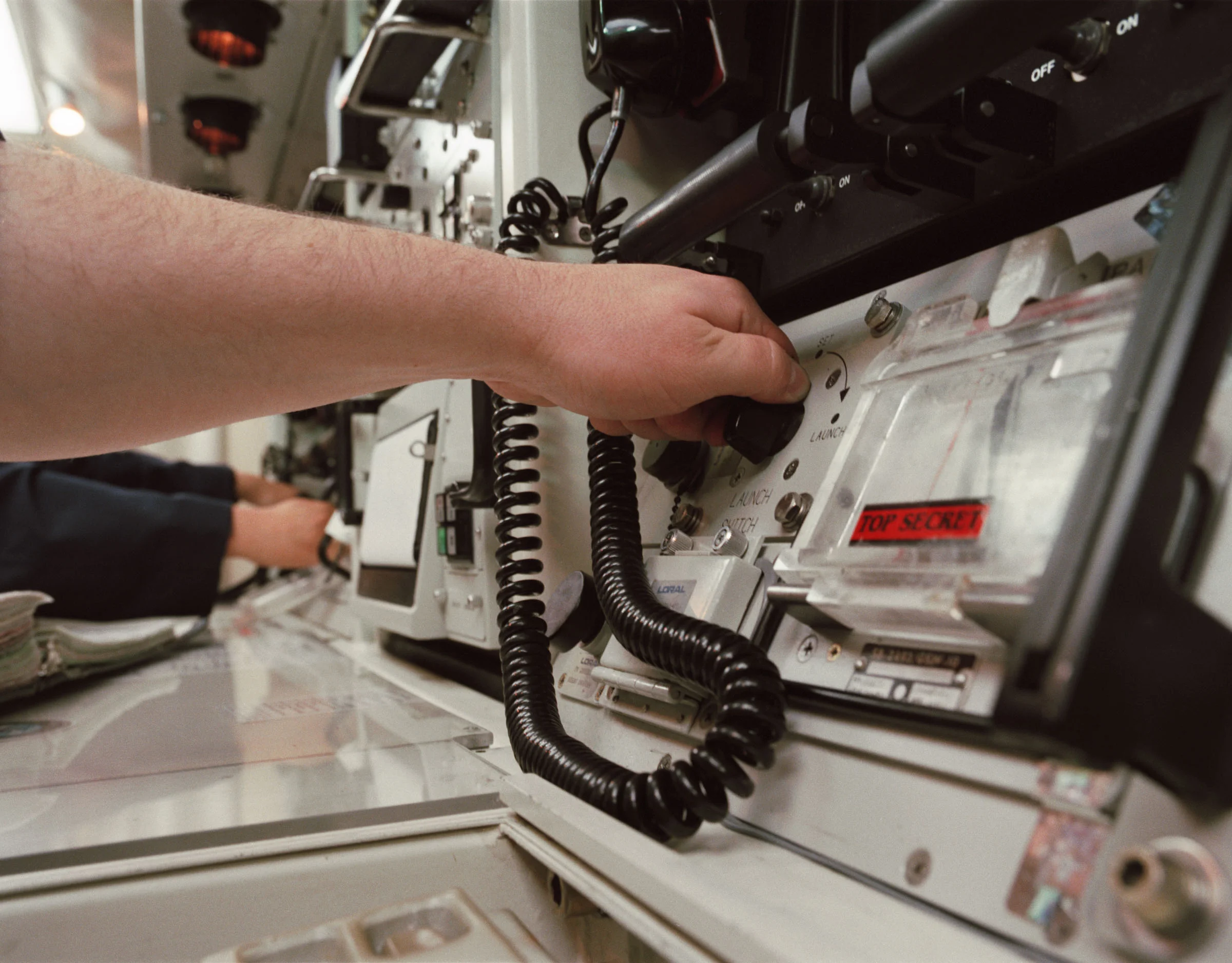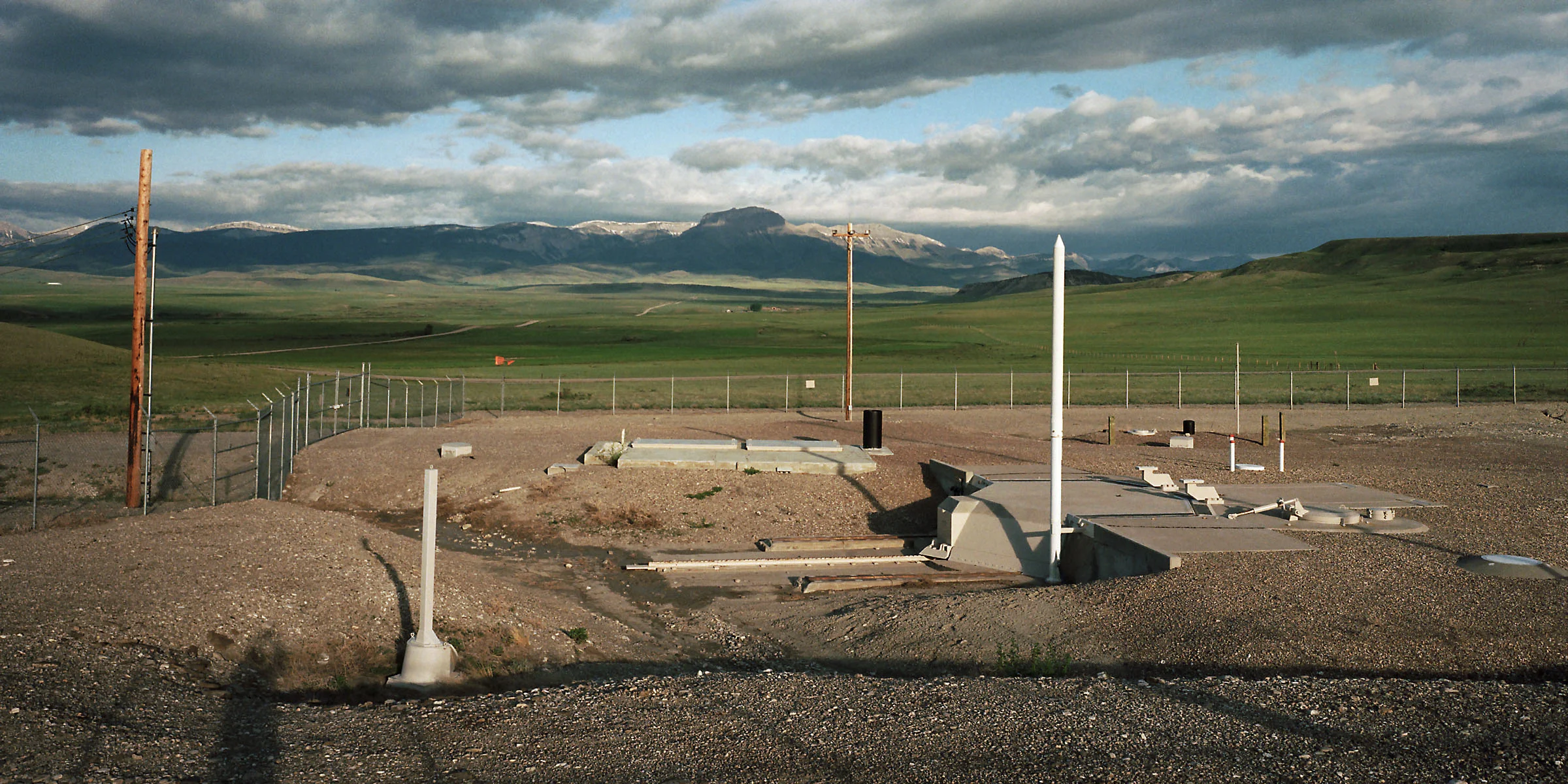Nuclear weapons
Nuclear weapons are still one of the dominant issues of our time, despite the ending of the Cold War. As we assess the past and contemplate the future, we have very little concrete visual imagery of the huge nuclear arsenal that has so strongly influenced our lives. With unprecedented cooperation from U.S. military authorities, I photographed warheads, submarines, bombers, missiles and associated facilities throughout the United States. Between 1992 and 2001 I made 35 visits to photograph more than two dozen weapons and command sites (plus hundreds of individual ICBM silos) in 16 states.
My goal was neither to directly criticize nor glorify. My objective was to reveal the tangible reality of the huge nuclear arsenal, something that exists for most of us only as a powerful concept in our collective consciousness. Psychiatrist Robert J. Lifton writes in his 1986 essay "Examining the Real: Beyond the Nuclear `End'":
"Given the temptation of despair, our need can be simply stated: We must confront the image that haunts us, making use of whatever models we can locate. Only then can we achieve those changes in consciousness that must accompany (if not precede) changes in public policy on behalf of a human future. We must look into the abyss in order to be able to see beyond it [emphasis mine]."
35 years after beginning this project, almost every type of US weapon, submarine, missile and bomber that I photographed is still active and on the highest level of alert (launch readiness), although in greatly reduced numbers. 2025 marked the 80-year anniversary of the first atomic explosion ("Trinity"), and the Hiroshima and Nagasaki bombings. The ending of the Cold War raised great hopes that justification for nuclear weapons would tumble along with the Berlin Wall. Such hopes have proven to be unfounded. The US and Russia are developing new weapons and delivery systems and each still deploys over a thousand warheads. Since I began my project, India, Pakistan and North Korea have joined the “nuclear club” with deliverable weapons. (On the bright side, Libya and Iran’s nuclear weapons programs have been ended or delayed through sanctions and diplomacy.)
The Bulletin of the Atomic Scientists’ Doomsday Clock stands in 2018 at 89 seconds to midnight, its most perilous point since 1953. (This status warns the public about how close we are to destroying our world with dangerous technologies of our own making.) This reflects the current dangers of use of nuclear weapons by a state, accidental use resulting from false lunch warnings, and terrorist non-state use of a stolen or crude nuclear or “dirty” bomb.
I hope my photographs will connect viewers to the legacy and current state of these threats, and help them to confront and define their own attitudes about the nuclear present and future.

